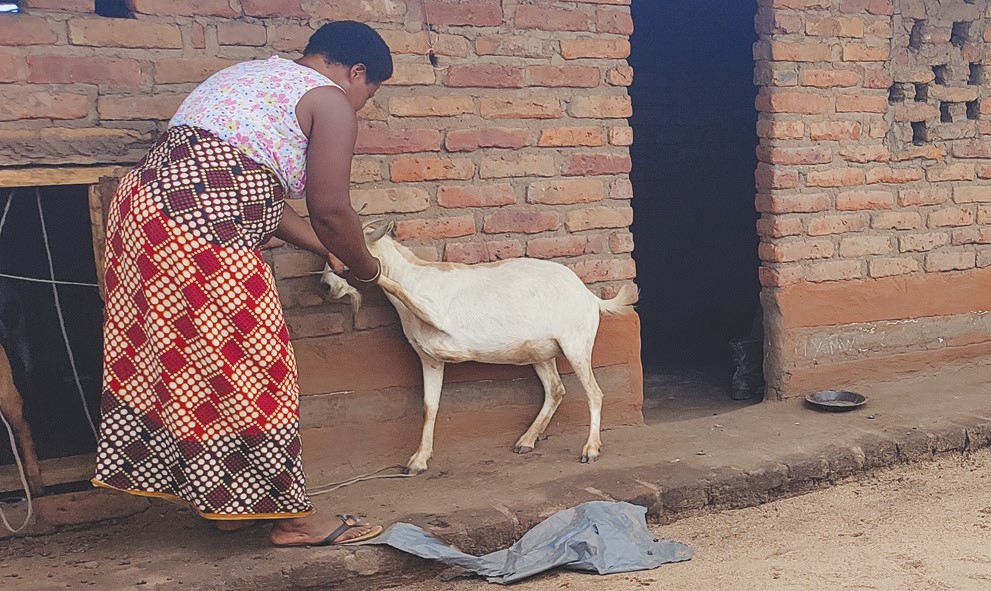Communities wipe out malnutrition
Esther Phiri, a 30-year-old mother of four from Chiphaka Village, Traditional Authority (T/A) Mwadzama in Nkhotakota District, recently gave birth to twins.
They are now almost two months old and the difference is clear from the other children she had before.

“The twins are healthier and much heavier compared to my first two children. And they are growing faster,” Phiri explains.
She attributes the difference to good nutrition and better hygiene in her household.
“As a family, we are now food secure. This is because we follow good nutrition practices, incorporating all six food groups into our diets,” she says in an interview.
They were trained on good nutrition practices through the Afikepo Project aimed at enhancing nutrition and food security in the country with Euro 88 million (about K158 billion) investment.
The project has also opened Phiri and her fellow community members’ eyes to the importance of accessing antenatal care services when expectant. Besides learning more about nutrition, they are also trained on good hygiene practices.
“We have learnt to keep our surroundings clean and maintain body hygiene. With such practices, we are much healthier and no longer frequent hospitals with avoidable illnesses such as cholera and diarrhoea,” Phiri says.
On nutrition practices, the young woman says they incorporate into their diet all six food groups which include vegetables, fruits, legumes, animal foods, fats, and staples.
Consequently, many of these community members now have backyard gardens, fruit trees and livestock to supplement the diets.
In a separate interview, Joyce Sikelo from Chidya Village, T/A Kambalame in Salima District says their lifestyles have changed through the programme.
“Now we know the importance of incorporating the six food groups in our diet and we have backyard gardens for easy access. We also have livestock, including chickens, ducks and doves for the same purpose. Our children are no longer malnourished. And even expectant women eat better now,” she says.
Sikelo confesses that previously, they were convinced that following good nutrition practices was only for the elite.
Now, they realise that they are not just there to cultivate food crops for sale, but for their own nourishment too.
In fact, for them, living close to the lake is a bonus as it affords them easy access to fish, both big and small for proteins.
“Our children are smarter and perform better in class because they no longer go hungry,” says the mother of four who has over 40 chickens and some goats.
Studies indicate that the first 1 000 days of life are the most critical to prevent stunting.
During this period, according to nutrition experts, optimal nutrition, and care for both the mother and child are critical for the child’s growth and development as this is the time when rapid brain development occurs.
Stunting, which according to the 2015/16 Malawi Health and Demographic Survey (MHDS) is at 37 percent, is a major indicator for malnutrition.
However, most areas in Salima, Nkhotakota and other districts have now reduced malnutrition to zero owing to the impact of the Afikepo Project, as under-five children, adolescents and pregnant as well as lactating mothers now eat better.
Salima district agriculture extension development officer Boston Phiri attests to this impact, explaining that a few years ago, Salima was one of the worst-hit areas in terms of malnutrition.
He notes that despite most of the families being farmers, they could not utilise the produce to their advantage nutrition wise.
Said Boston Phiri: “Now they know that they have what it takes to nourish their bodies and they are a transformed community.
“There was a time when having malnourished children was desirable in the families just to access the ready-to-use therapeutic food commonly known as chiponde from hospitals. They would even take malnourished children from others to go and receive chiponde from the hospital.”
He also observes that the communities have improved their hygiene practices, and they no longer practise open defecation, defecating in the lake, or littering anyhow, all of which were a source of preventable diseases.
Their mindsets have changed, and they understand that prevention is better than cure.
“This has improved children’s health and reduced malnutrition. From 2017 till now as the project phases out, child mortality has declined. We have not registered any infant mortalities lately,” Boston Phiri says.
His counterpart in Nkhotakota, Nancy Namanja says cases of malnutrition have declined in the district.
“Most families were provided with livestock such as rabbits, chickens, and goats which they can sometimes sell to buy the foods they lack or eat to supplement their diets.
“They are also encouraged to have backyard gardens and fruit trees for diversified nutrition. Even after the project phases out, they will continue to have these in their diets,” she explains.
On her part, Salima Food and Agriculture Organisation district officer Rebecca Kadazi highlights that most people had low capacity to diversify their production and their diets but have learned through the project.
“They can diversify their production by growing a variety of bio-fortified crops and raising livestock and they are able to sustain the interventions on their own.
“The community leaders have also been key as they had their own by-laws to sustain some of these interventions. So, some people adhered because they were afraid of the by-laws that were set,” she said.
She equally highlighted that the rates of malnutrition have reduced in the communities they worked with.
“Many children were malnourished in the district, for instance, but now in all the households you will find all under-fives well-nourished because of the skills that the caregivers have imparted in the households,” she said.
Financed by the European Union and implemented by Malawi Government and other partners, the Afikepo Project is touted to have improved food security at household level from 16 percent when it started in 2017 to 53 percent this year.





